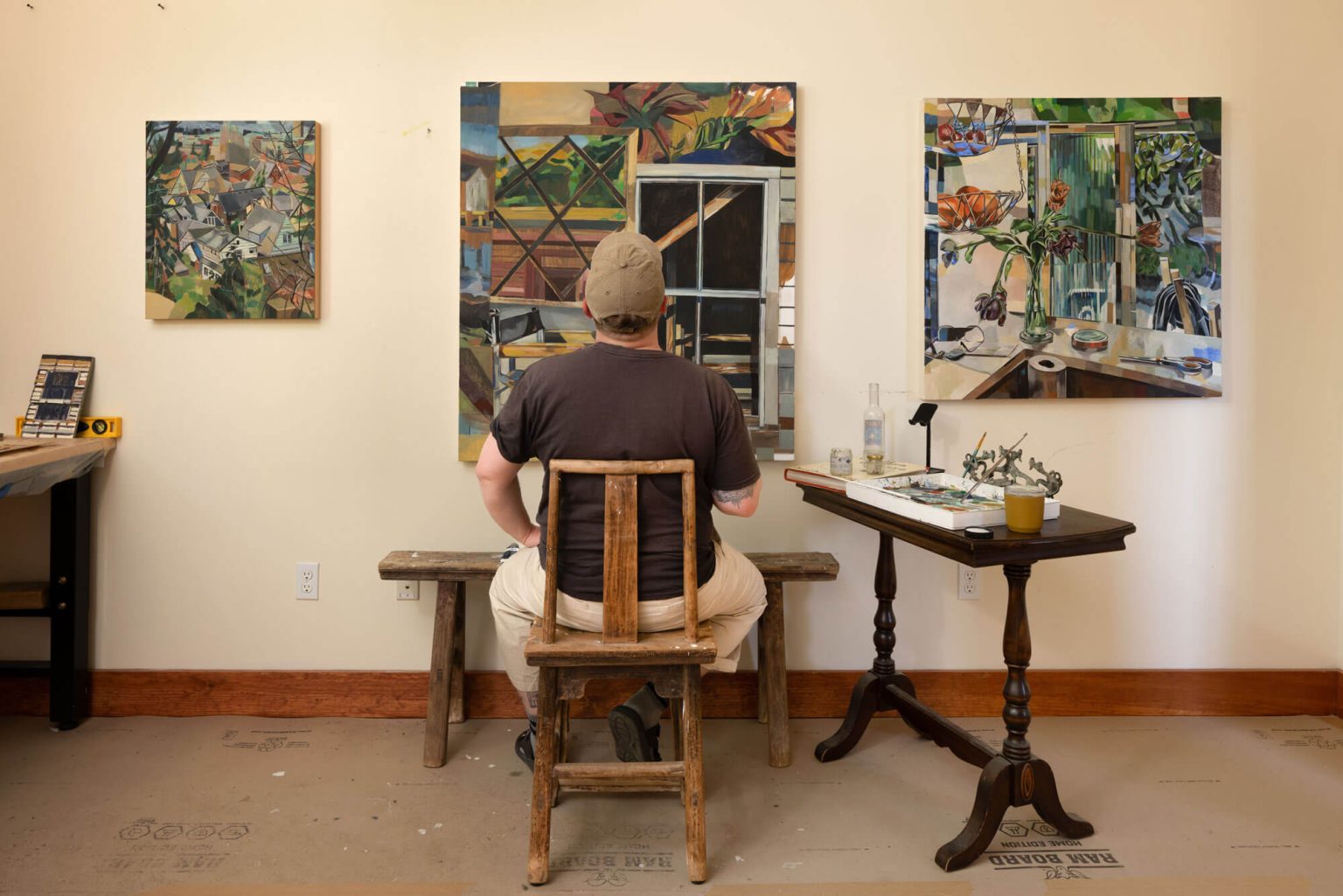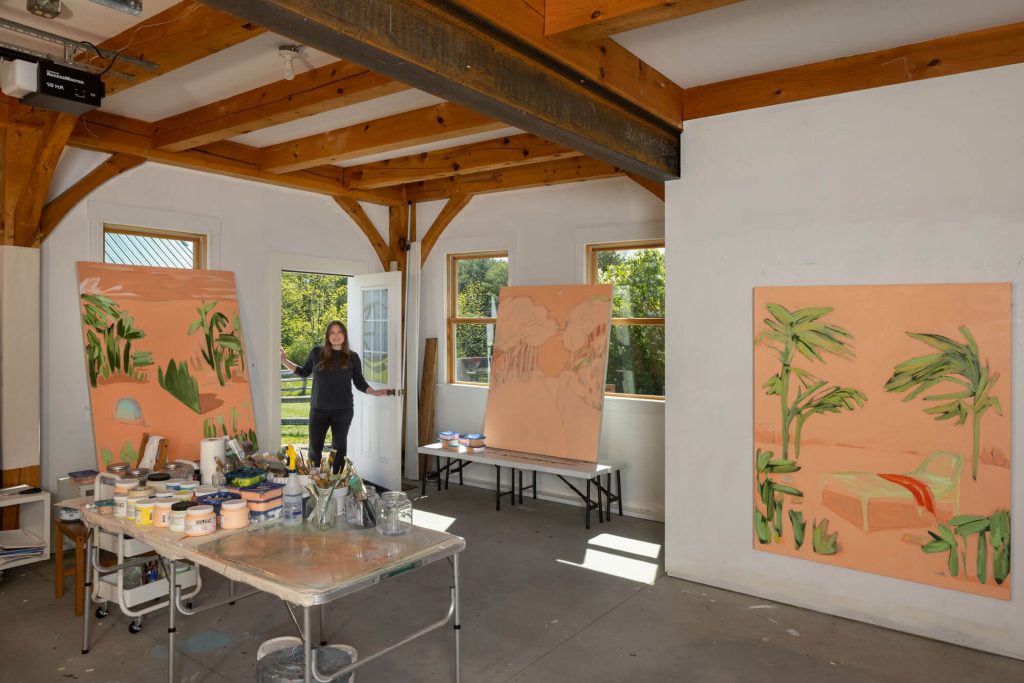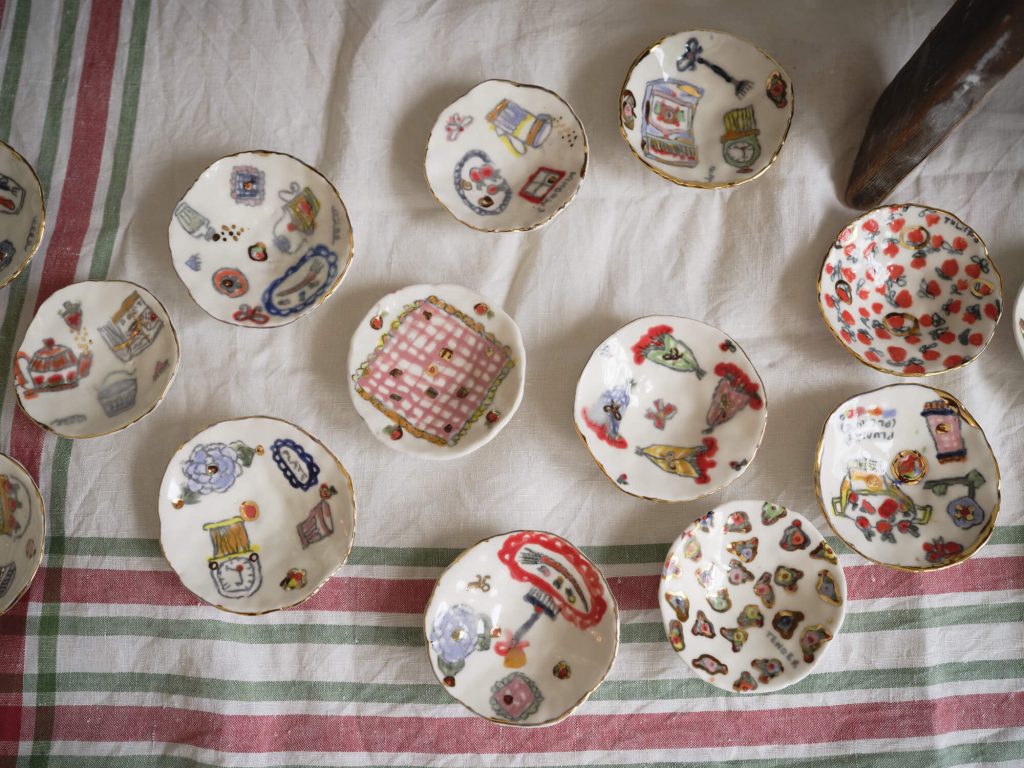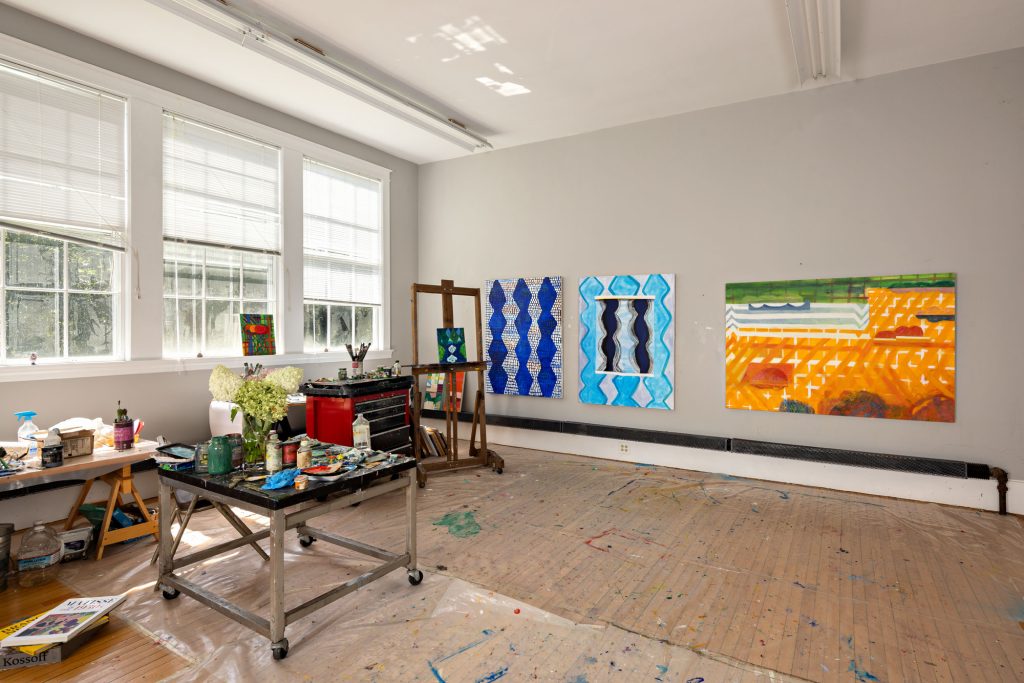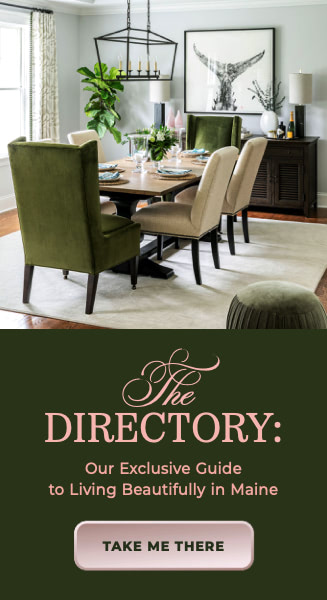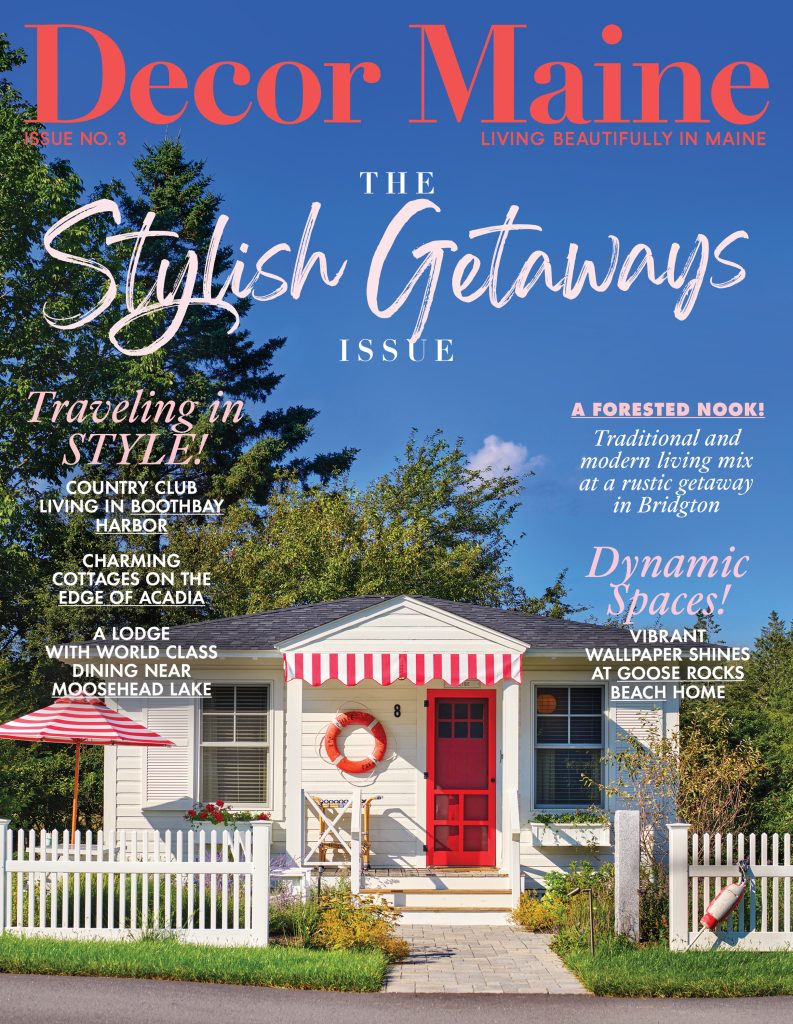A relative newcomer to the Maine art community, Ohio-born artist Jay Stern moved to the state from Seattle in 2021. In this short time, he has made an impact with his jewel-toned paintings that hover on the edge between abstraction and representation. His work was included in the exhibition Interior at the Center for Maine Contemporary Art in the fall of 2022, where it impressed art critic Jorge Arango, who wrote, “Stern’s energetic brush strokes and application of many layers of color make the image feel perpetually morphing and moving.” This fall, Stern will have work at the Caldbeck Gallery in Rockland. Beyond Maine, he recently had a solo exhibition at NOON Projects in Los Angeles and a two-person show at Turley Gallery in Hudson, New York.
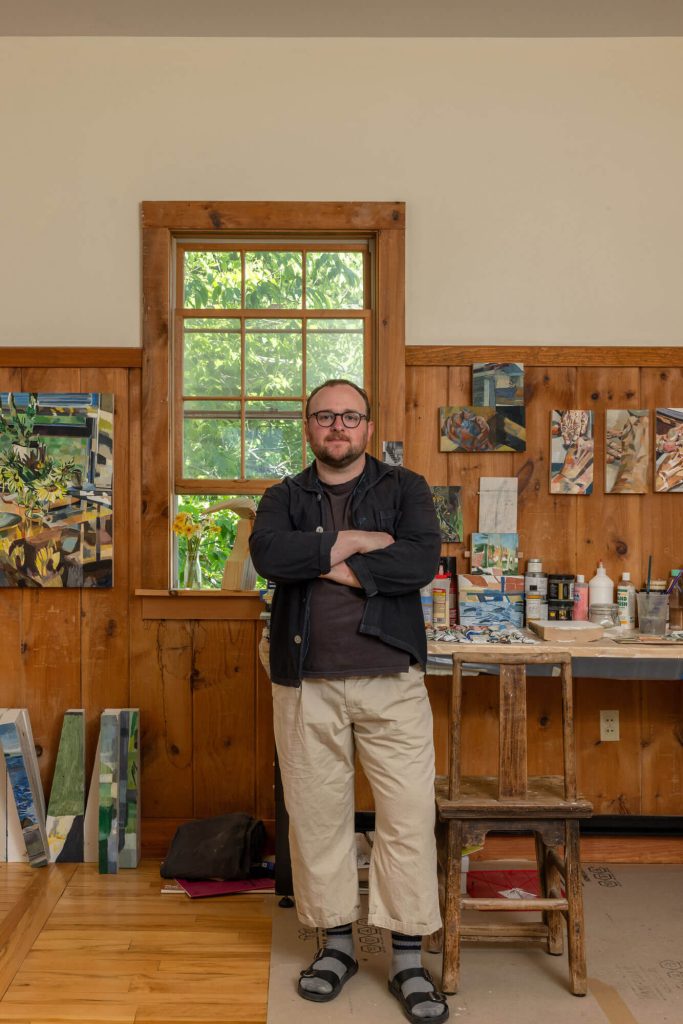
I sat down for a conversation with the artist at his studio in a former grange hall in a midcoast town. The studio has a sweeping view of farmland and a vast apple orchard. The window to the left of Stern’s worktable is fully curtained by a closely planted tree, suggesting a scene from one of his paintings. Surrounded by nature, the artist merges the outside with the inside, bridging interior and exterior spaces in faceted compositions of seen and remembered images.
Your paintings are often about the fractured way that we recall events, people, and places. What role do time and memory play in your art?
The lived experience is key in the inception of my compositions and the past serves an important role in where I find my sources. Time and memory feel foundational, but my hope is that the visual language transcends further than my own experience and offers a point of reference for the viewer.
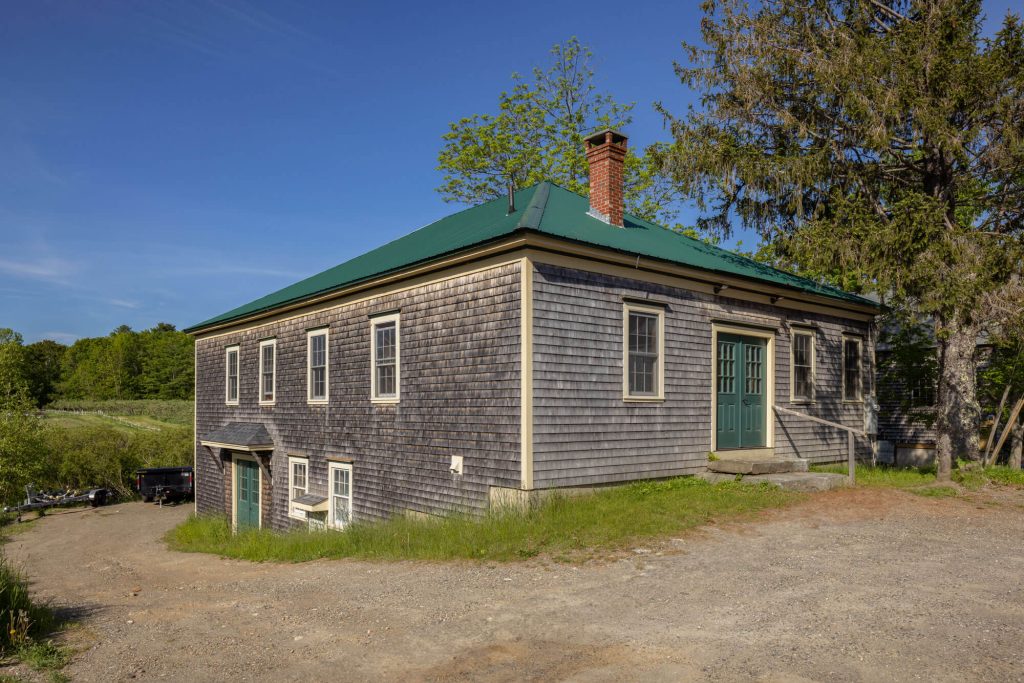
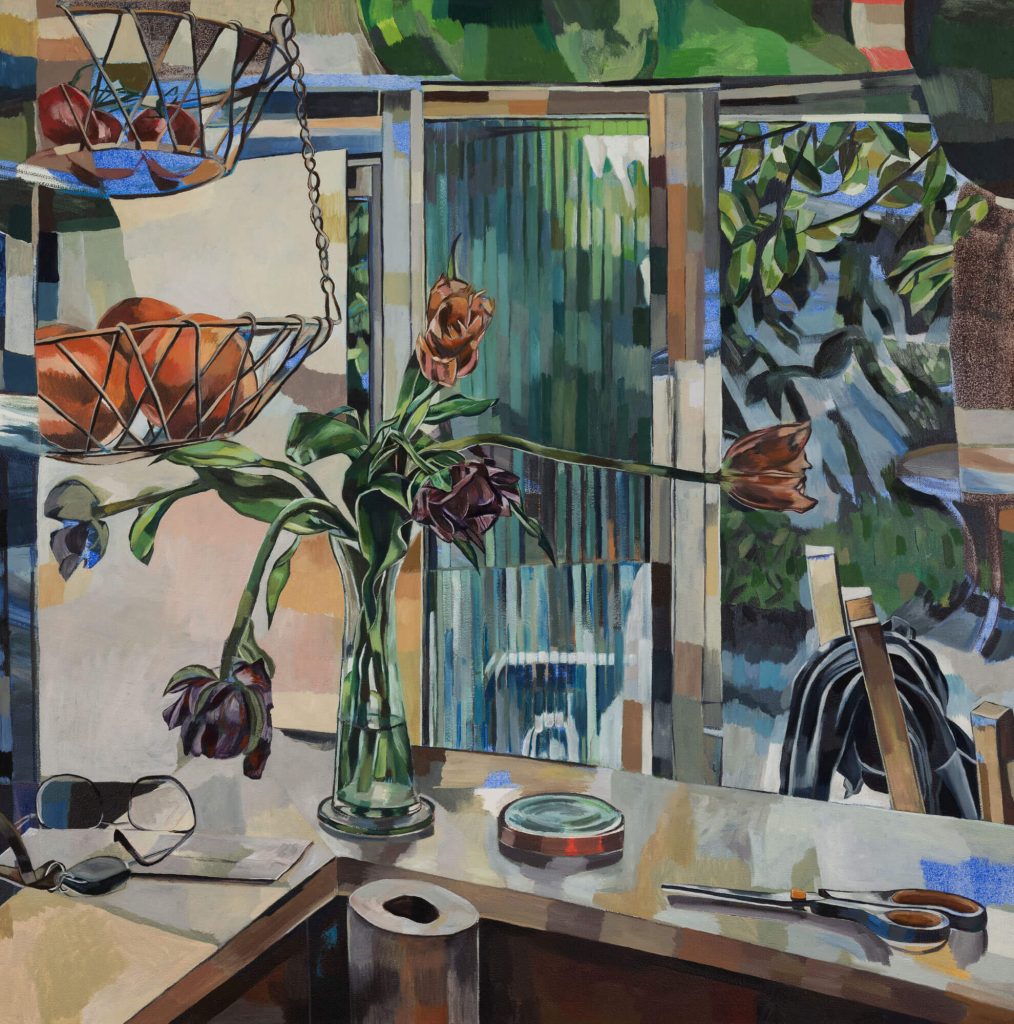
You recently moved across the country from Seattle to Maine. What drew you here? And has the location change prompted a change in your paintings?
My partner was born and raised in this area and after a housesitting opportunity presented itself, we made the move. Once we decided, it really sunk in that I’d be following in the tracks of so many painters I admire. Visually, I’m a bit overwhelmed; this place is full of magic and surprise. I find myself wanting to get lost on back roads, taking turns that don’t lead me to where I’m going, but to new locations that I could never find without a little exploration. The Maine landscape is vast, and I’m letting it trickle in slowly and naturally.
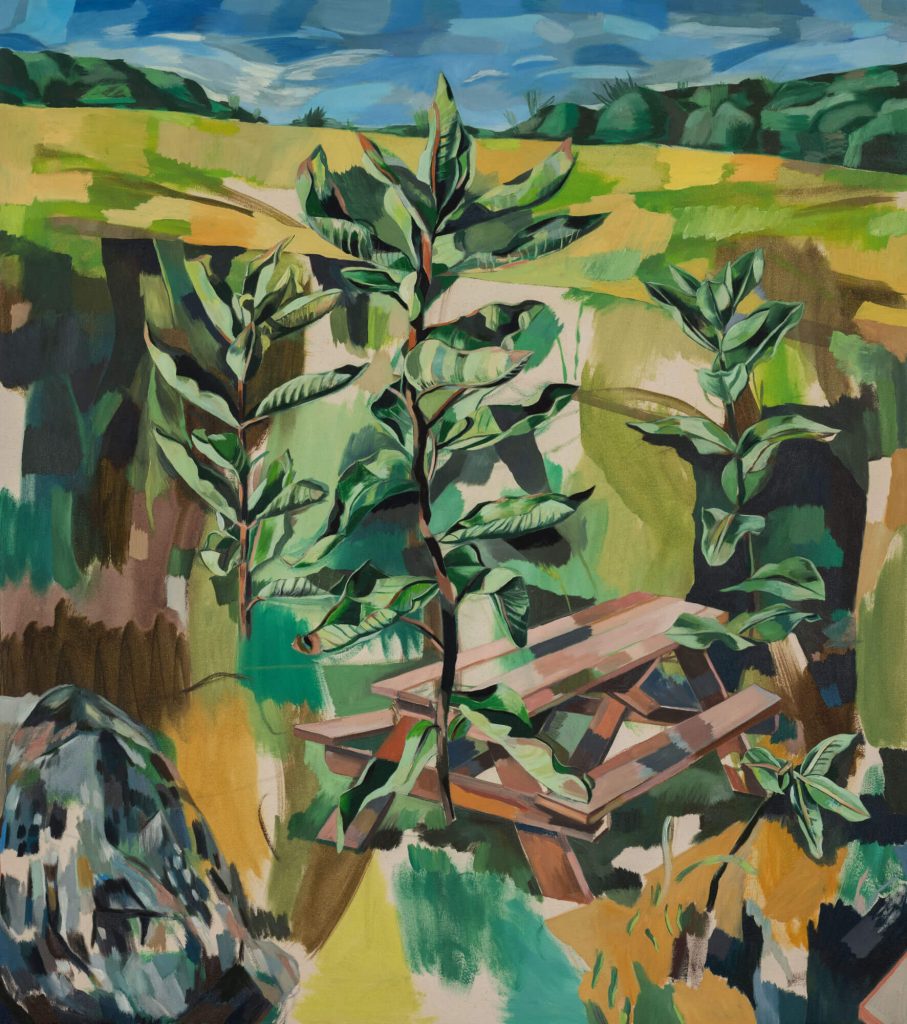
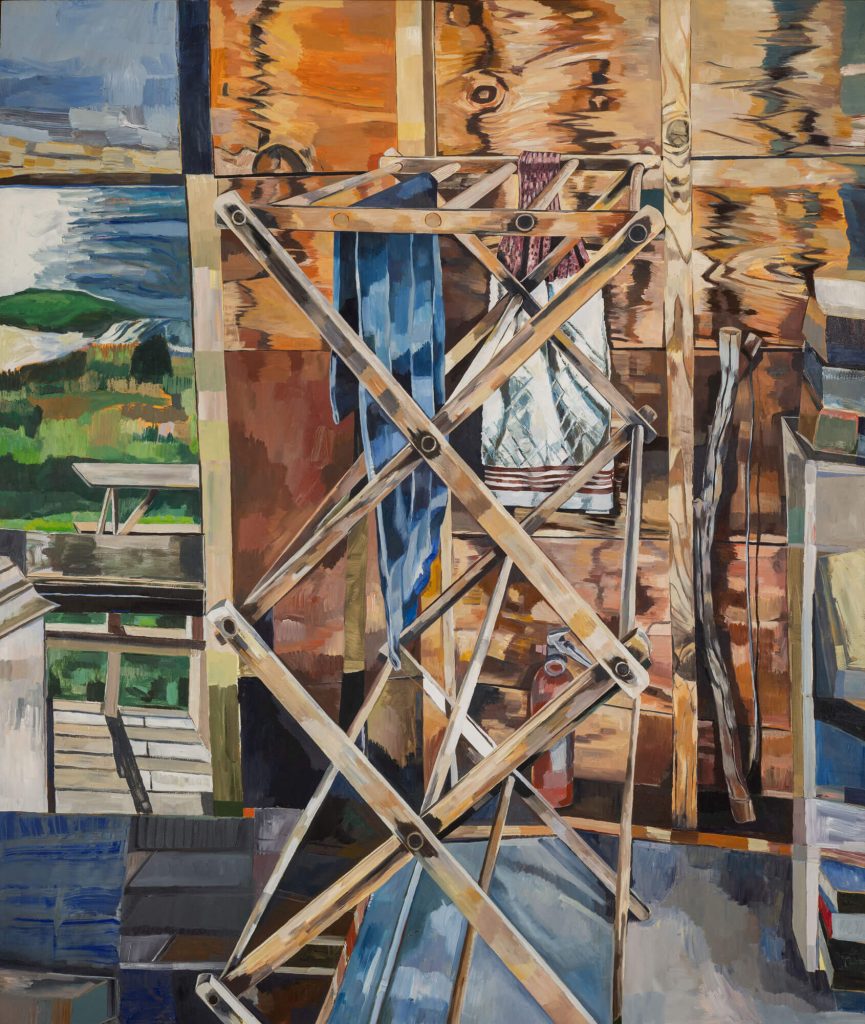
What’s your day like in the studio? Do you work on one painting at a time or have several underway at once? Is the image constructed before you start to paint, or do you compose it on the canvas?
I try to stick to a normal weekday schedule and work on several paintings at once. I’ve found that working on different paintings each day helps in not “overworking” one specific picture. Some paintings need more attention than others. Others need to rest so I can figure out my next move. I like having a loose plan but allow the paint and composition to lead the way.
Along with personal imagery, you often reference the work of other artists in your paintings. Lois Dodd and Edward Hopper are two that come to mind. Who are some of the other artists you admire and draw upon?
Recently, landscape paintings by Cézanne and Braque have inspired me. It’s exciting to see these two artists take on the landscape so softly, all while keeping true to their active brushstroke. I’d be remiss to not mention the early works of Yvonne Jacquette—they showcase a great understanding of the active nature of interior space. Milton Avery, Betty Parsons, and Howard Hodgkin are a constant for me.
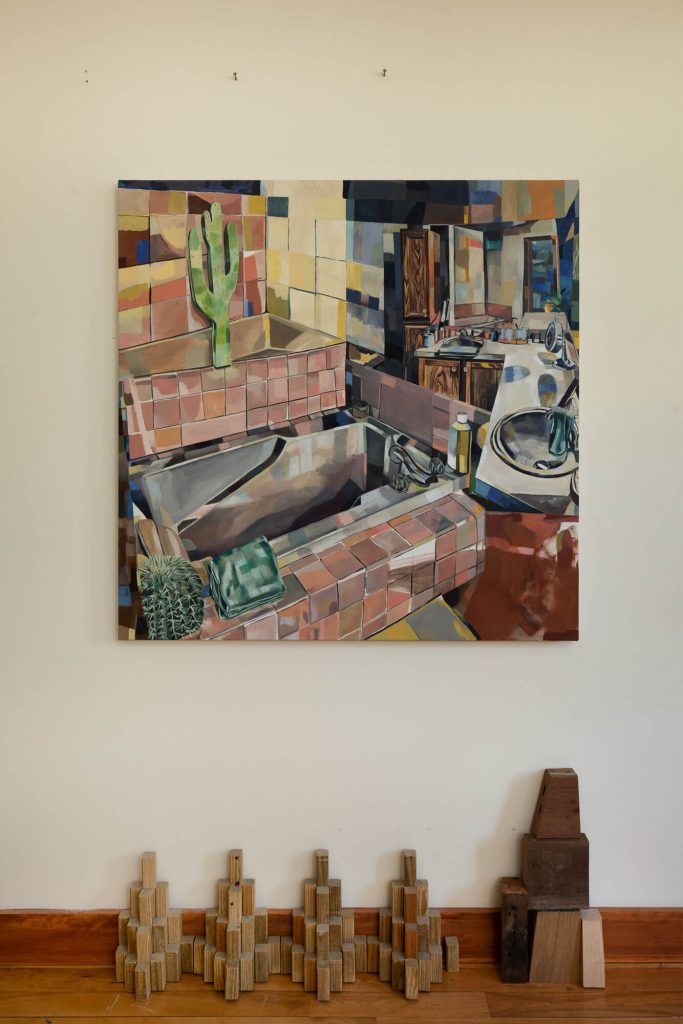
The presence of people in your paintings is implied rather than depicted, and yet you’ve frequently spoken of them as portraits. How so?
My work relies on giving deep attention to quotidian subject matter, resulting in a relationship that forms a similar function to that of portraiture. The hope is that the evidence of a human life or experience is fully present, but the figure is not essential to the painting. In some ways, this exploration in space has related more to people than to place. Richard Diebenkorn and Pierre Bonnard did this beautifully.
I always like to ask, what’s next? What’s underway in the studio that you’re excited about?
I’m feeling happy in the studio these days, making as much work as I can and trying to listen to my brush, more than my brain. I hit a real stride this fall making work for my show in Hudson and hope to continue the energy heading into 2024. ▪
